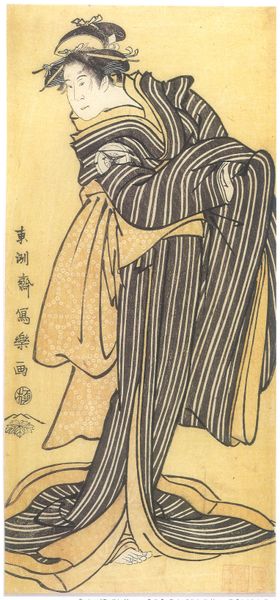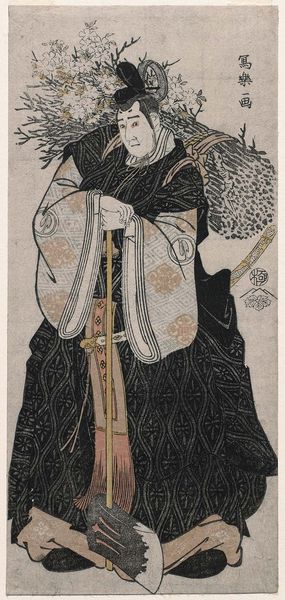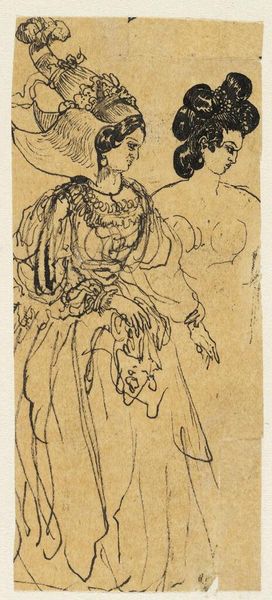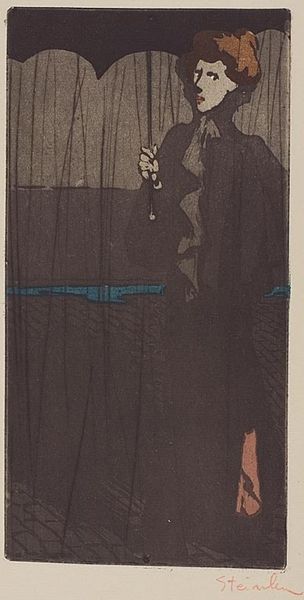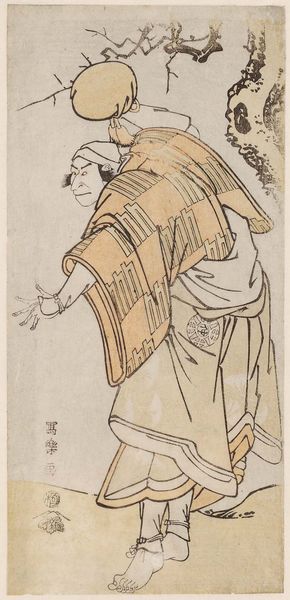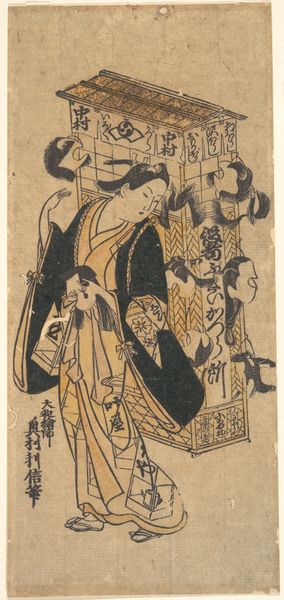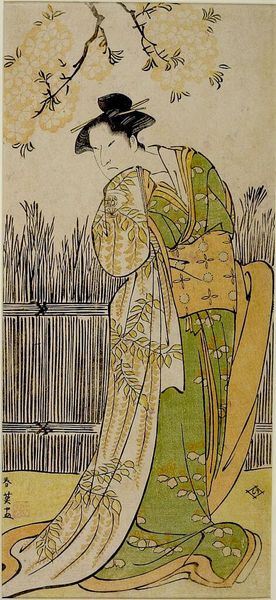
print, woodblock-print
#
portrait
# print
#
asian-art
#
ukiyo-e
#
woodblock-print
Copyright: Public domain
Editor: This is a woodblock print from 1794 by Tōshūsai Sharaku, titled "Nakamura Noshio II as Konohana, Daughter of Ki no Tsurayuki." There's something very melancholic in the figure's posture. The sharp lines contrasting with soft floral patterns create an interesting tension. How do you interpret this work, focusing on its visual structure? Curator: Indeed, the interplay between line and form is crucial. Notice how Sharaku employs bold, decisive lines to delineate the actor's figure, emphasizing the contours of the robes and face. The graphic weight of the black robe anchors the composition, providing a stark contrast to the subtly rendered blossoms on the lower portion of the kimono. Observe, too, the positioning of the figure relative to the tree trunk; do you see how it creates a vertical counterpoint, reinforcing the planar aspect of the print? Editor: Yes, the way the black of the robe and the grey of the tree interact really frames the lighter kimono and face, bringing those colors forward and providing great depth, which is surprising for a print. But beyond that structural use of the background, how do the plants work within this framing device? Curator: The blossoms introduce a vital element of textural variation and complexity. The light and flowing shapes give visual and figurative context for what one can expect from nature or a particular type of flower, without overtly imitating realism. Instead, it acts as a key component to understanding that nature, that blossoming moment is about the ephemeral nature of beauty itself. Editor: I see, it is definitely all about what is there rather than an interpretation. The color values aren't what drive that emotional reaction for me so much as how Sharaku represents that naturalism with graphic precision. Curator: Exactly! Through meticulous observation of its structural organization we come to appreciate the ways line, texture, and composition work. A most illuminating encounter, wouldn't you agree? Editor: I learned a lot today about not as much about Sharaku, but how to actually look at how their artistic process helps create emotion, rather than seeing that from context alone. Thank you.
Comments
No comments
Be the first to comment and join the conversation on the ultimate creative platform.
